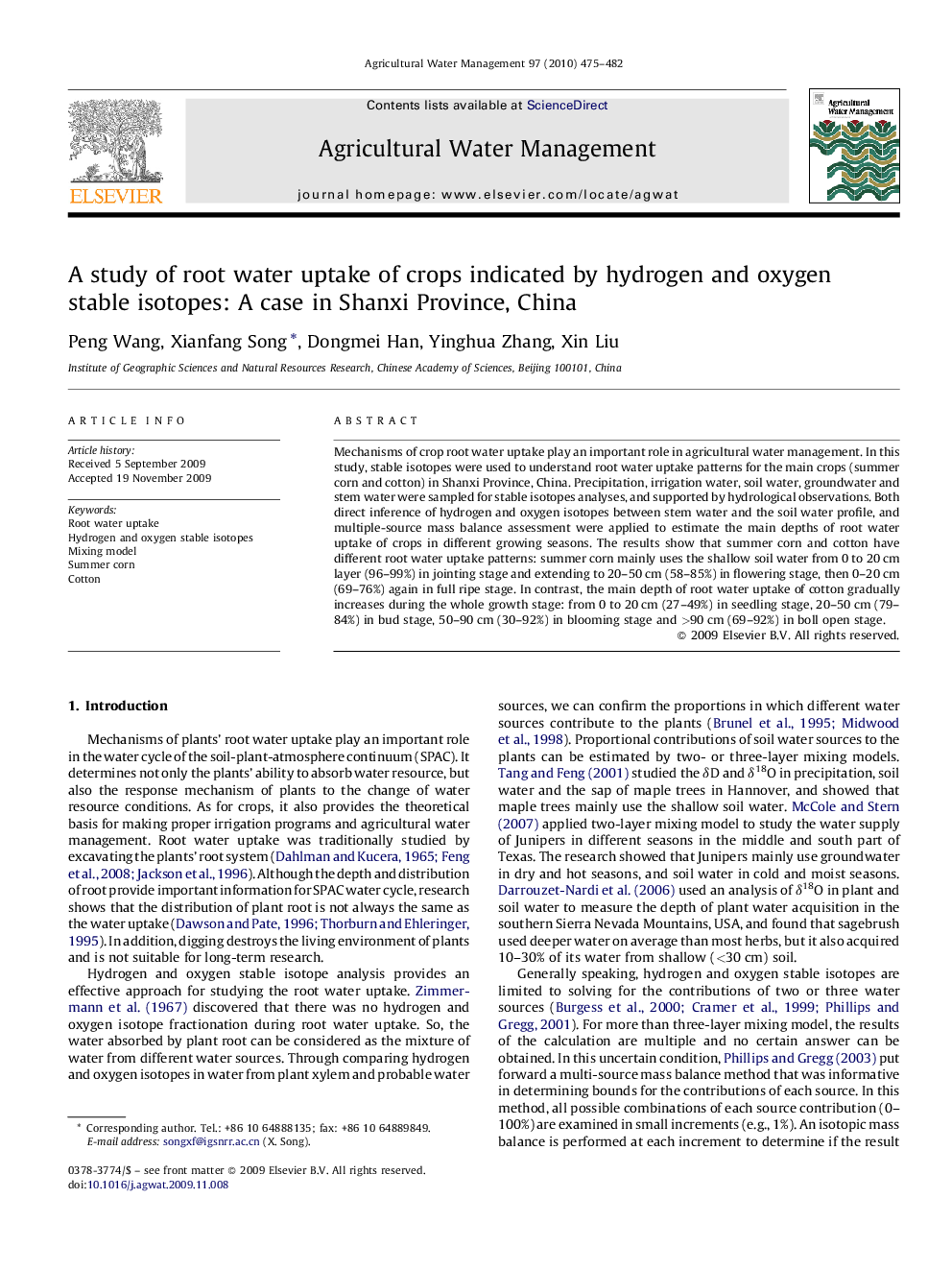| Article ID | Journal | Published Year | Pages | File Type |
|---|---|---|---|---|
| 4479935 | Agricultural Water Management | 2010 | 8 Pages |
Mechanisms of crop root water uptake play an important role in agricultural water management. In this study, stable isotopes were used to understand root water uptake patterns for the main crops (summer corn and cotton) in Shanxi Province, China. Precipitation, irrigation water, soil water, groundwater and stem water were sampled for stable isotopes analyses, and supported by hydrological observations. Both direct inference of hydrogen and oxygen isotopes between stem water and the soil water profile, and multiple-source mass balance assessment were applied to estimate the main depths of root water uptake of crops in different growing seasons. The results show that summer corn and cotton have different root water uptake patterns: summer corn mainly uses the shallow soil water from 0 to 20 cm layer (96–99%) in jointing stage and extending to 20–50 cm (58–85%) in flowering stage, then 0–20 cm (69–76%) again in full ripe stage. In contrast, the main depth of root water uptake of cotton gradually increases during the whole growth stage: from 0 to 20 cm (27–49%) in seedling stage, 20–50 cm (79–84%) in bud stage, 50–90 cm (30–92%) in blooming stage and >90 cm (69–92%) in boll open stage.
